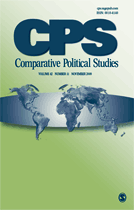Books
Monographs
Defending Democracy: Reactions to Extremism in Interwar Europe, Baltimore, Johns Hopkins University Press, 2005, pages 352 (paperback 2007, kindle 2011)Winner, 2006 Best Book on European Politics Award of the American Political Science Association
How does a democracy deal with threats to its existence when those threats come from political parties that play the democratic game? This volume analyzes the experience of European democracies that survived the challenge of rising extremist movements during the inter-war years and compares them with the well-known cases of pre-Fascist Italy and Weimar Germany. The comparison of democratic crises that are all triggered by the rise of anti-system parties but then result in either regime survival or breakdown provides an important supplement to standard structuralist accounts focused on socio-economic variables. Although in many cases political regimes are socially overdetermined, in other cases democratic and anti-democratic tendencies are more evenly balanced, and the strategies of incumbents become crucial in steering the crisis towards democratic survival or breakdown. If, at the outset, incumbents enjoy some margin of maneuver, their coalitional choices and policy responses can be decisive in determining democracy's fate. Coalitional choices that stabilize democracy often require disregarding immediate electoral gains, and therefore are the object of intense struggles within those parties of government that are most electorally threatened by the rising extremist tide. Policy responses have to strike a difficult balance between repression and accommodation, and short- and long-term imperatives, to keep democracy on course during critical moments.
Publisher -- amazon.co.uk -- amazon.com -- amazon.it
La Germania unita fra continuità e innovazione: Sistema elettorale e sistema partitico nel processo di riunificazione tedesca, [Unified Germany between Continuity and Renewal: Electoral and Party System in the Process of German Reunification] , Rome, Bulzoni, 1995, pages 490 (paperback).
Despite the emphasis of many commentators on the political changes triggered by reunification in 1990, the politics of reunified Germany display remarkable continuity with those of the old Federal Republic. This book analyzes the roots of institutional continuity in post-reunification Germany, with a focus on the role of the electoral and party system. More than the early enthusiasm of the majority of East German electors for liberal democracy and rapid reunification, the main factors behind political continuity were institutional and organizational. The political elites of the Federal Republic were the main drivers of this process. On the one hand, they endeavored to keep in place the same electoral procedures of the old FRG in the newly reunified Germany. The limited electoral reform that was in the end adopted was the consequence of a decision of the Federal Constitutional Court in defense of constitutional principles of fair competition. On the other hand, West German political parties engaged in a vast and successful effort to extend their organizational structures to the GDR immediately after the collapse of the Communist regime. By doing so, they captured most of the East German vote even before the reunification process formally started. The extension of the FRG's party and electoral system to reunified Germany played a crucial role in ensuring that any political repercussions of reunification would be dealt with in the familiar political-institutional context of the post-war West German Republic.
Publisher -- amazon.co.uk -- amazon.com -- amazon.it
Edited volumes
Back from the Brink: Countering Illiberalism in Liberal Democracies (co-edited with Isabela Mares), double special issue of Comparative Political Studies, forthcoming.
 This
volume examines the conditions under which democratic governments,
political parties, and civil society organizations can successfully
implement countermeasures against illiberal actors in liberal
democracies. Existing scholarship on countermeasures remains fragmented
and dispersed across different research traditions and subfields. The
introductory article offers a unifying framework for analyzing the
confrontation with illiberal forces across three key scenarios:
prevention, when an illiberal opposition is gaining political
influence; containment, when it is on the verge of obtaining executive
power; and resistance, when pro-democratic actors confront a
backsliding illiberal executive. The theoretical approach focuses on
the implications and dilemmas of different timings in interventions
against illiberal actors, emphasizing the roles of information dynamics
and historical legacies. The framework gives particular attention to
countermeasures designed to achieve short-term effects, while also
providing a foundation for analyzing long-term dynamics as political
contexts evolve through successive scenarios. The individual
contributions to the special issue test various aspects of this
theoretical model, applying the methods of comparative politics to
explore the effectiveness of countermeasures against illiberalism and
the conditions under which they succeed. Collectively, the volume lays
the groundwork for a broad, forward-looking research agenda on
democratic responses to illiberalism within liberal democracies.
This
volume examines the conditions under which democratic governments,
political parties, and civil society organizations can successfully
implement countermeasures against illiberal actors in liberal
democracies. Existing scholarship on countermeasures remains fragmented
and dispersed across different research traditions and subfields. The
introductory article offers a unifying framework for analyzing the
confrontation with illiberal forces across three key scenarios:
prevention, when an illiberal opposition is gaining political
influence; containment, when it is on the verge of obtaining executive
power; and resistance, when pro-democratic actors confront a
backsliding illiberal executive. The theoretical approach focuses on
the implications and dilemmas of different timings in interventions
against illiberal actors, emphasizing the roles of information dynamics
and historical legacies. The framework gives particular attention to
countermeasures designed to achieve short-term effects, while also
providing a foundation for analyzing long-term dynamics as political
contexts evolve through successive scenarios. The individual
contributions to the special issue test various aspects of this
theoretical model, applying the methods of comparative politics to
explore the effectiveness of countermeasures against illiberalism and
the conditions under which they succeed. Collectively, the volume lays
the groundwork for a broad, forward-looking research agenda on
democratic responses to illiberalism within liberal democracies.
Link to online version
The Historical Turn in Democratization Studies (co-edited with Daniel Ziblatt), double special issue of Comparative Political Studies, Vol 43, 8/9, August/September 2010.
Winner, 2010 Best Paper in Comparative Democratization, and 2011 Mary Parker Follett Award for the Best Article in Politics and History, American Political Science Association (Introductory article)
 This volume lays the
theoretical and methodological foundations of a new historically minded
approach to the comparative study of democratization, centered on the
analysis of the creation, development, and interaction of democratic
institutions. Historically, democracy did not emerge as a singular
coherent whole but rather as a set of different institutions, which
resulted from conflicts across multiple lines of social and political
cleavage that took place at different moments in time. The theoretical
advantage of this approach is illustrated by highlighting the range of
new variables that come into focus in explaining democracy’s
emergence. Rather than class being the single variable that explains
how and why democracy came about, scholars can see how religious
conflict, ethnic cleavages, and the diffusion of ideas played a much
greater role in Europe’s democratization than has typically
been appreciated. Above all, the essays in the volume argue that
political parties were decisive players in how and why democracy
emerged in Europe and should be at the center of future analyses. The
co-editors develop this theoretical approach in the introductory essay;
the contributors apply it to the analysis of critical
turning points in the development of democracy in European countries
between the 1810s and the 1970s.
This volume lays the
theoretical and methodological foundations of a new historically minded
approach to the comparative study of democratization, centered on the
analysis of the creation, development, and interaction of democratic
institutions. Historically, democracy did not emerge as a singular
coherent whole but rather as a set of different institutions, which
resulted from conflicts across multiple lines of social and political
cleavage that took place at different moments in time. The theoretical
advantage of this approach is illustrated by highlighting the range of
new variables that come into focus in explaining democracy’s
emergence. Rather than class being the single variable that explains
how and why democracy came about, scholars can see how religious
conflict, ethnic cleavages, and the diffusion of ideas played a much
greater role in Europe’s democratization than has typically
been appreciated. Above all, the essays in the volume argue that
political parties were decisive players in how and why democracy
emerged in Europe and should be at the center of future analyses. The
co-editors develop this theoretical approach in the introductory essay;
the contributors apply it to the analysis of critical
turning points in the development of democracy in European countries
between the 1810s and the 1970s.


